As the Volatility Index ($VIX) rises, it becomes fairly obvious that market makers are "on vacation." The primary role of the market maker is to provide liquidity when there's an imbalance between buyers and sellers. Rarely do we see panicked buying when buyers completely swamp sellers. Instead, it's usually panicked selling that has the market makers packing their collective bags. Would you want to commit your capital on the long side to try to stabilize the stock market during a selling stampede? Neither would I and neither would market makers. So they simply sit it out or short it. Remember, market makers are the absolute best short-term traders because they see the order flow. It's the primary reason why we move lower so quickly during volatile periods.
Growth stocks are taking the brunt of the selling, as they normally tend to do during periods of market weakness and volatility. If you want to see what unabated selling looks like, here are just a few examples:
TSLA:
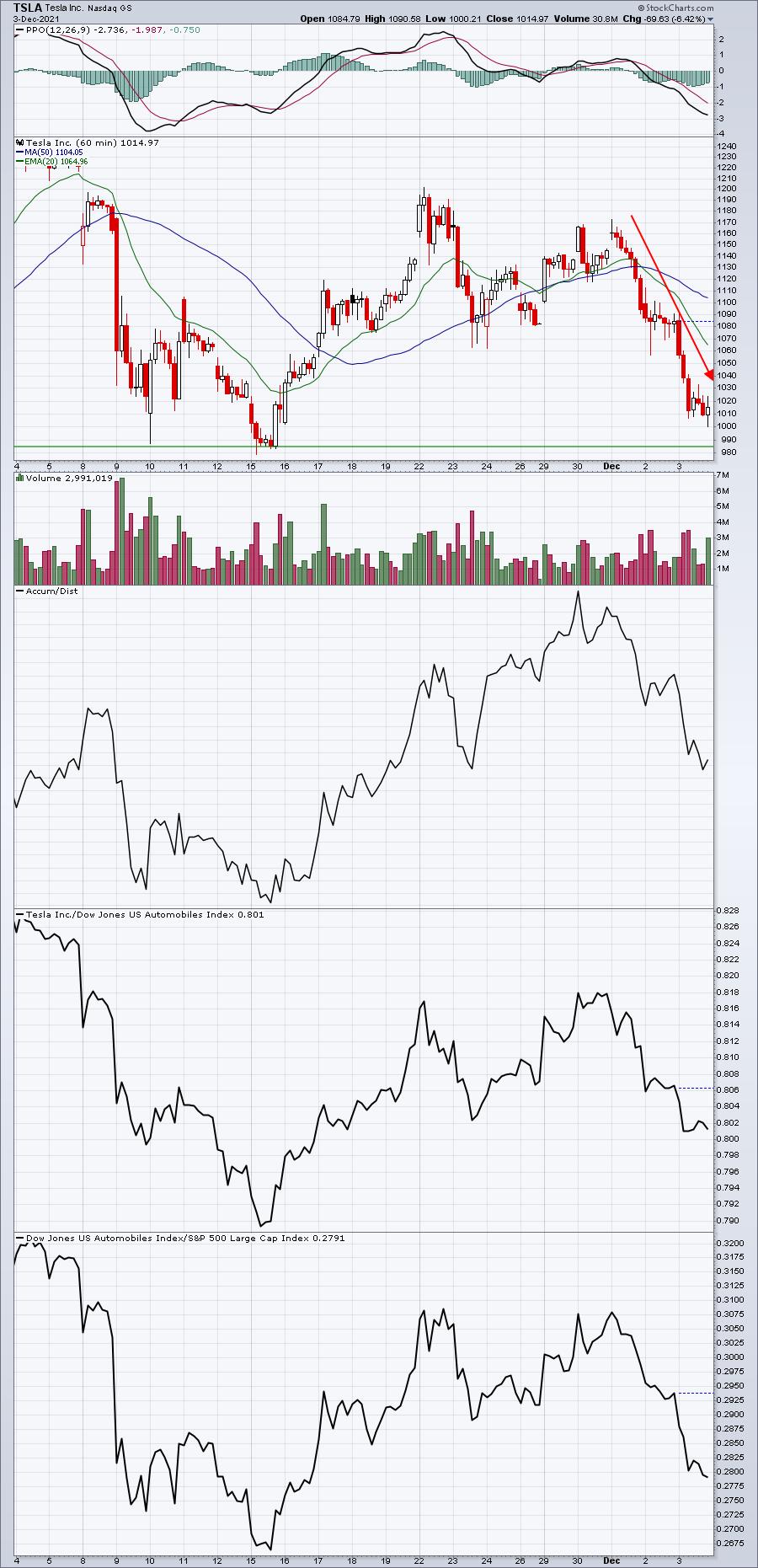
It may not look like much, but TSLA fell 170, or roughly 15%, in just three trading days. If the panicked selling continues next week and TSLA loses its support in the 980-985 area, key price support at 900 could be waiting. The stock market is not rational as volatility expands exponentially.
FB:
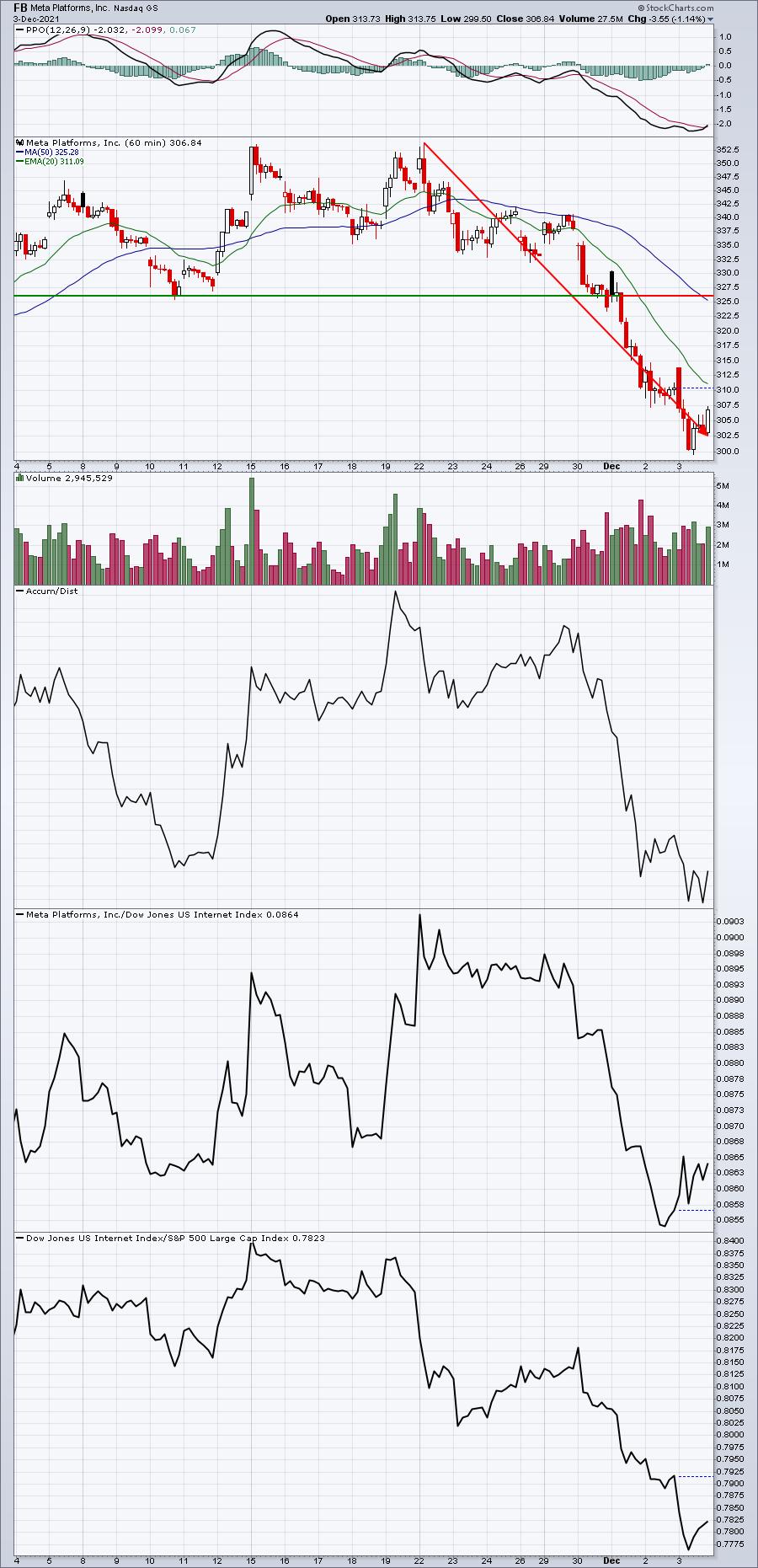
FB lost 50 points, also 15% or so, since its November 22nd high. 15% is closing in on bear market territory, which is typically defined as a 20% decline. That part's not overly crazy, because pullbacks of this magnitude can be expected from time to time, even in the strongest secular bull markets. But losing that much over just a few days to a couple weeks can be devastating to a short-term trader.
ETSY:
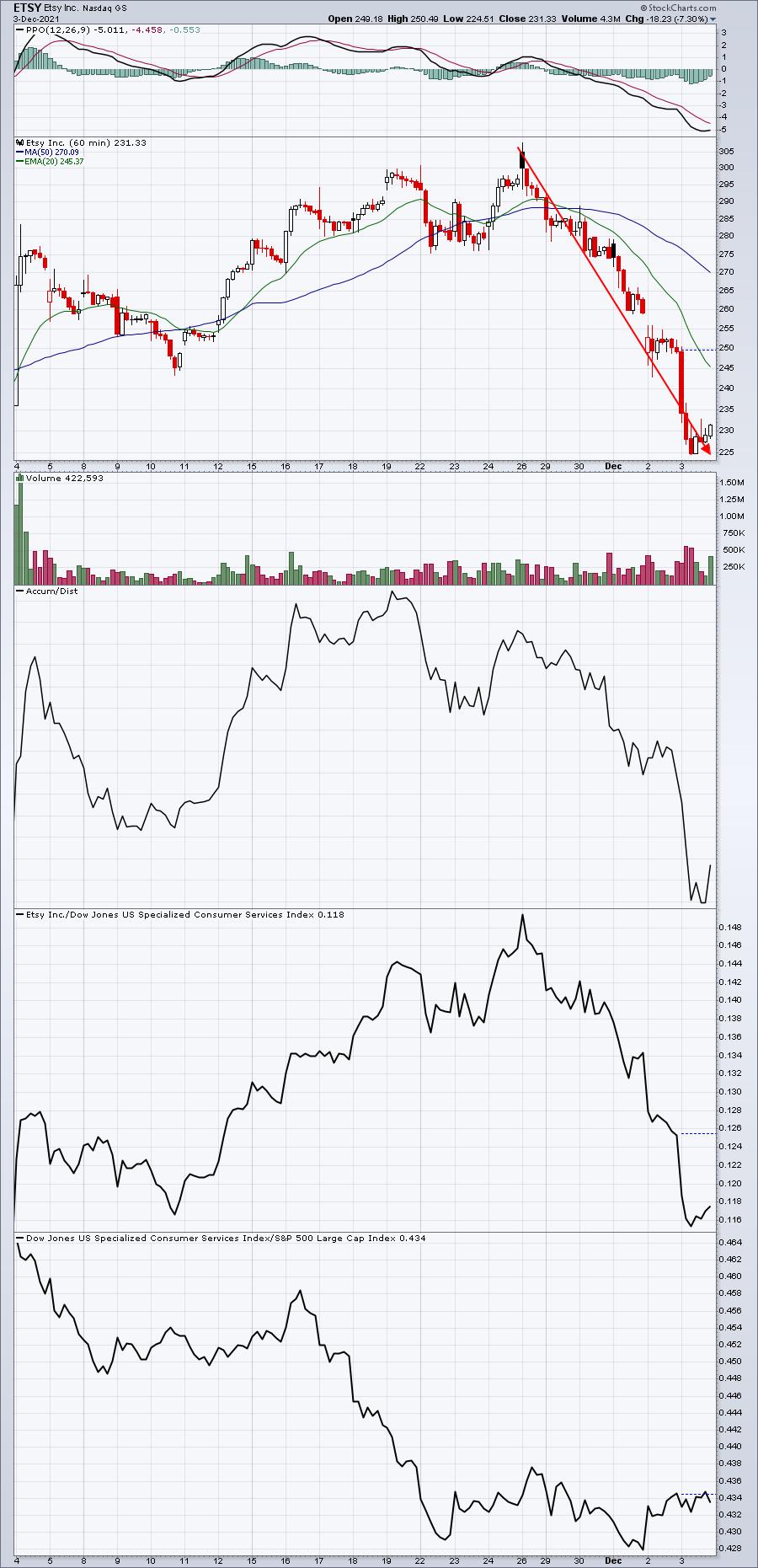
While the TSLA and FB declines were serious, many other growth stocks were hit much harder recently. ETSY is a perfect example. On November 26th, ETSY was enjoying yet another 52-week absolute and relative high. Just one week later it found itself in bear market territory, falling more than 25%.
I haven't even mentioned Docusign (DOCU), which after beating consensus EPS estimates, issued disappointing guidance and dropped an astounding 42% just on Friday alone!
Looking Back
The warning sign was there. If you follow my work, you know I'm long-time bull. I believe we're in a secular bull market that still has much further to run, perhaps over many, many more years - with the occasional correction or even cyclical bear market along the way. Most of my articles and shows focus on the bullish characteristics of this secular bull market. But there are occasions when storm clouds are brewing and we're given significant warning signs. I wrote about it at the beginning of September 2020, just before a very difficult 2-month period. And just two weeks ago, I wrote about and discussed the increasing nervousness in the stock market. Typically, as the S&P 500 rises, the Volatility Index ($VIX) falls. There's an inverse correlation there that you'll normally see on the appropriate S&P 500 chart. As equity prices rise, we should expect for nervousness to fall and that's really what the VIX measures - nervousness or fear. But when we go through several days of a rising equity market AND rising volatility, it's a warning sign. It tells us that while the market is rising, so is fear. It further signals that U.S. equities are not in a position to handle bad news well. As an analogy, think about a patient who's hospitalized with a compromised immune system. They're much more likely to acquire other illnesses as their body is not equipped to fight them off. A rising stock market with a rising VIX is a sick stock market. It can't handle any other illnesses. As the S&P 500 was climbing and setting new all-time highs in November, so too was the VIX. At that time, I published my article, "Dark Clouds Are Engulfing Wall Street; Bulls, Strike Three You're Out". While I'm almost always bullish, I heed the warning shots fired on the charts, not in the media. Now that the downside has begun, we have incredibly bearish media headlines to look forward to. Just remember they won't be designed to educate you or help you with your finances. They'll be there to scare the bejesus out of you and have you click on their headlines. That's how they make money. And I can assure you that they're much more concerned about their own money than they are yours.
Sentiment Charts Help Us Mark Bottoms
During panicked selloffs, the VIX helps us see when fear is reaching levels where previous bottoms have formed. It's the "kitchen sink thrown in" that we're looking for, a crescendo of sorts. As you review this VIX chart, note how moves into the 30s are fairly rare and have typically marked S&P 500 bottoms:
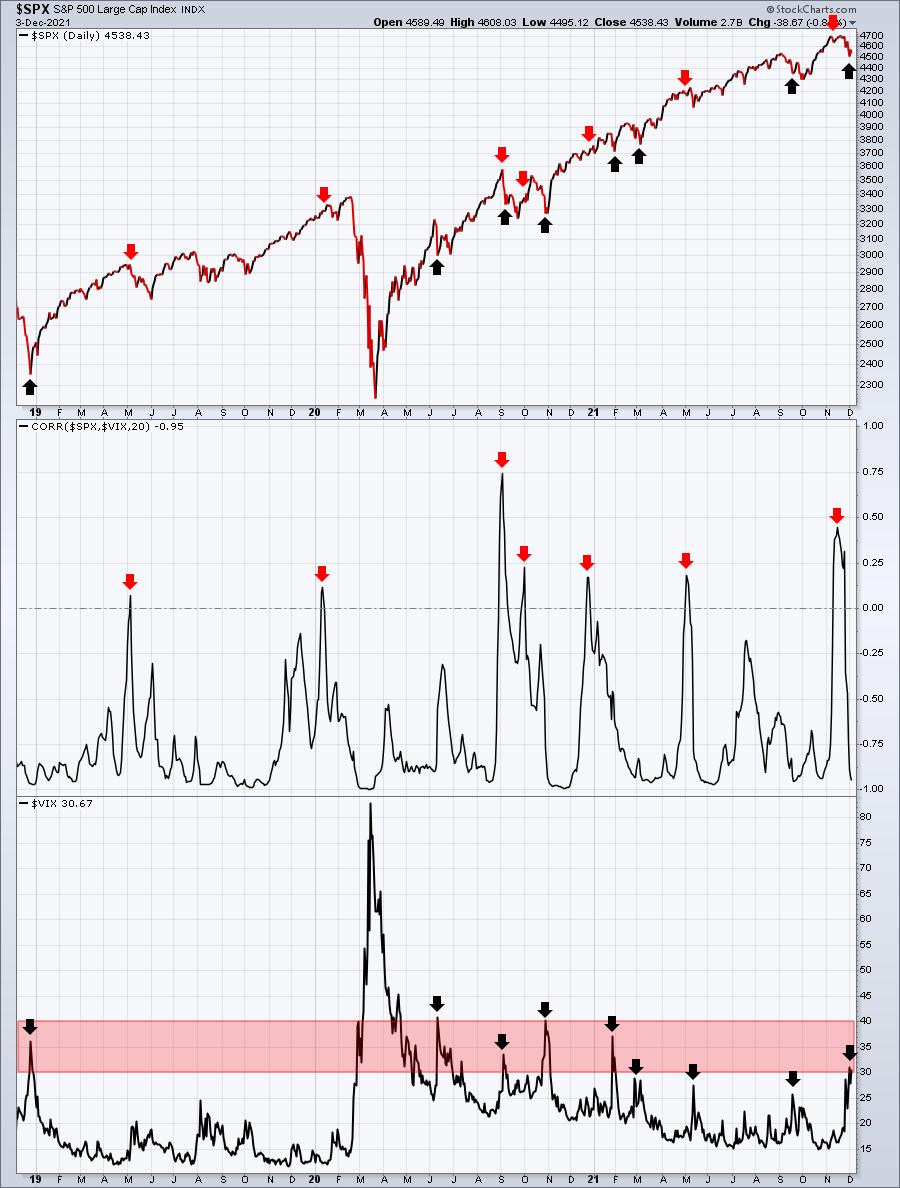
The black arrows mark tops in the VIX, which tend to coincide with S&P 500 bottoms. The red-shaded area between 30 and 40 is particularly impressive in establishing market bottoms. The red arrows mark periods when we need to be more cautious. They certainly do not guarantee an immediate selloff, but I believe it's pretty obvious that protecting your capital at these times was mostly sound risk management.
The other chart to pay close attention to is the equity only put call ratio ($CPCE). I don't follow the CPCE chart, but after we go through a period of selling, it's wise to pull it up and see how aggressively traders are buying puts. Options traders tend to be the most emotional traders, because you can make or lose a LOT of money in a very short-term period. In the 3 charts earlier - TSLA, FB, and ETSY - can you imagine the number of calls that were deep in the money a week or two ago and are now worthless? Well, now with the significant decline, there are more and more puts that are growing in value. Not only that, but options traders are getting more aggressive on the put side now, after the significant decline has already taken place. Here's the latest CPCE reading:
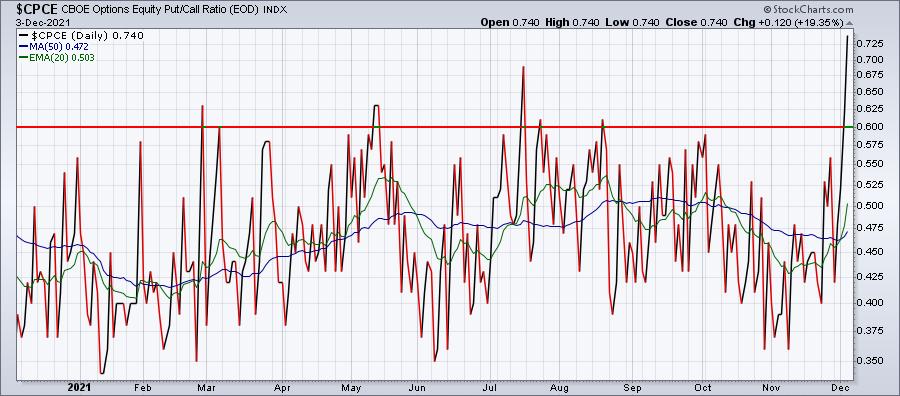
You can see that those buying put options were more aggressive than they've been all year. The problem with this chart is that it's very volatile. One day it's at .40 and the next day it's at .65. To smooth this out, I like to use a 5-day moving average. To do this, be sure to select "Invisible" chart and then for your overlay, choose the "simple moving average" and 5 for its parameter. This is what you'll see:
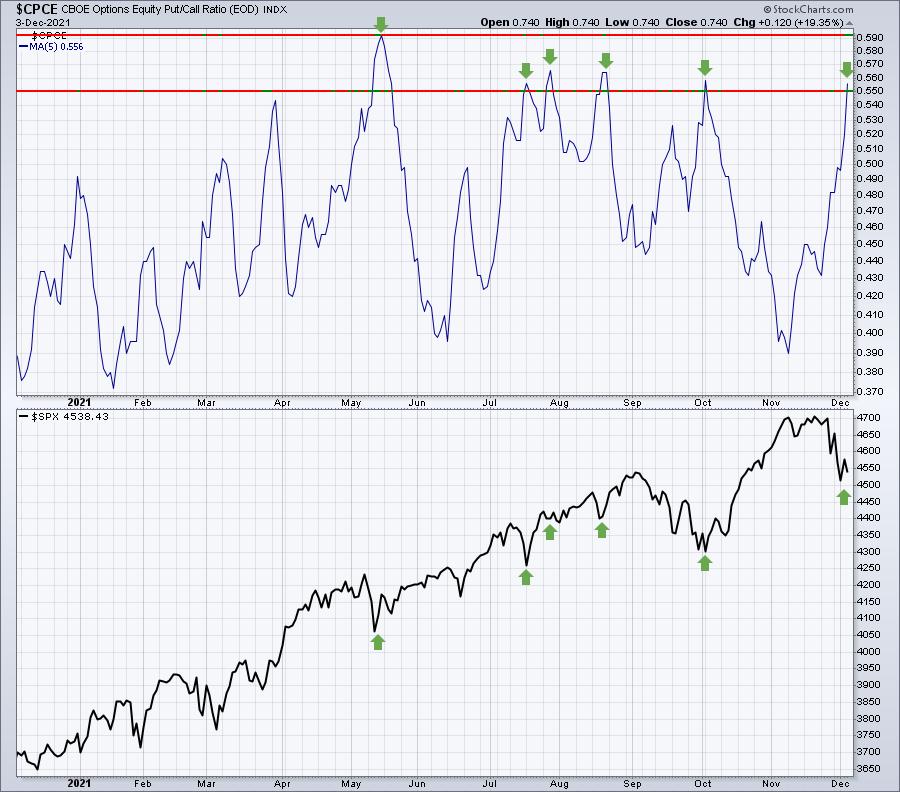
Is it perfect? Of course not. Is it helpful? Most definitely. Two weeks ago, I suggested caution as the market was growing very nervous while rising. Now we're on the opposite end of sentiment and emotions. We're seeing levels of fear and short-term panic that are associated with market bottoms. Here's the big problem. If we happen to see another 2-3 days of selling and the VIX and CPCE rise further, and you try to time a bottom on Monday morning, you could see prices fall another 5-10% before bottoming. Therefore, if you heeded that initial warning and built a pile of cash, I'd consider one of two strategies. I'd either pick out my favorite stocks and slowly build positions as prices fall or, if you'd prefer to trade with less risk, maybe consider buying index ETFs like the SPY and QQQ, which represent the S&P 500 and NASDAQ 100, respectively.
We keep for our EarningsBeats.com members a "Bullish Trifecta ChartList" that includes only stocks on our Strong Earnings ChartList (SECL), Strong AD ChartList (SADCL), and Raised Guidance ChartList (RGCL). I believe these are among the best 59 stocks to consider right now as they've beaten Wall Street revenue and EPS estimates in their most recent quarter, show significant signs of accumulation, and have seen their management teams increase their previous guidance. Those three criteria lead to higher market valuations, in my opinion, which makes these 59 unique companies a serious list of contenders to include in just about any portfolio, especially a market that's having a fire sale.
In our Monday EB Digest newsletter, which is completely free (no credit card required), I'll be providing a link to this Bullish Trifecta ChartList to everyone in our EarningsBeats.com community. Put our research to work for you to help navigate this volatile market. CLICK HERE to register with your name and email address. You may unsubscribe at any time.
Happy trading!
Tom






